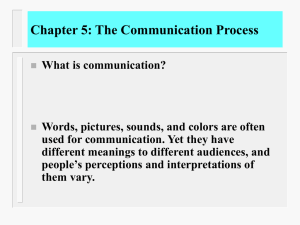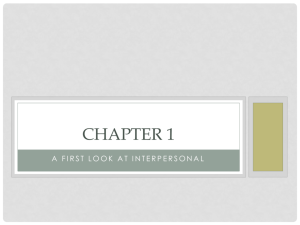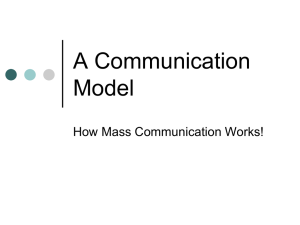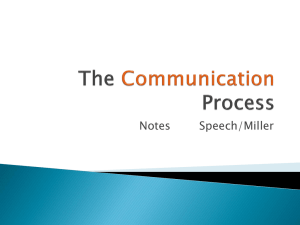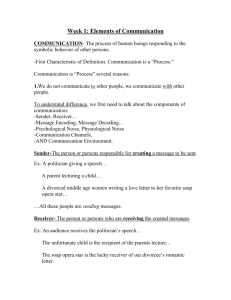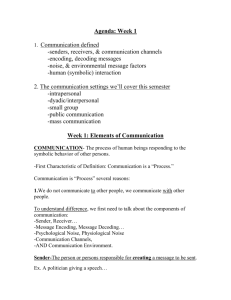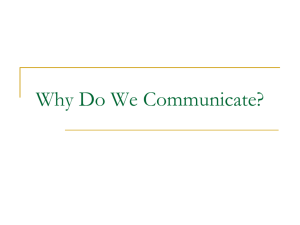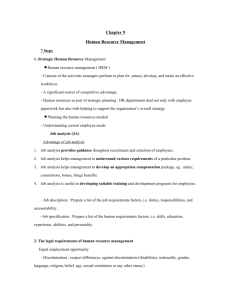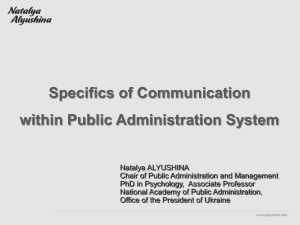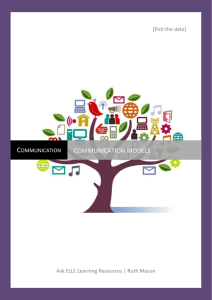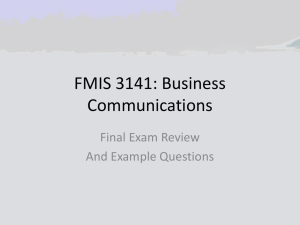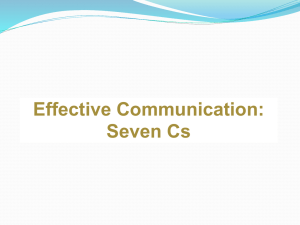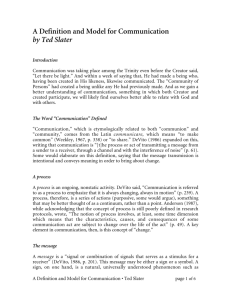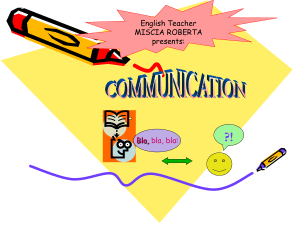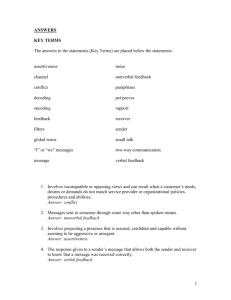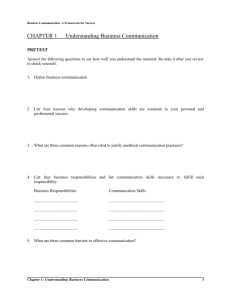Learning to Communicate
advertisement
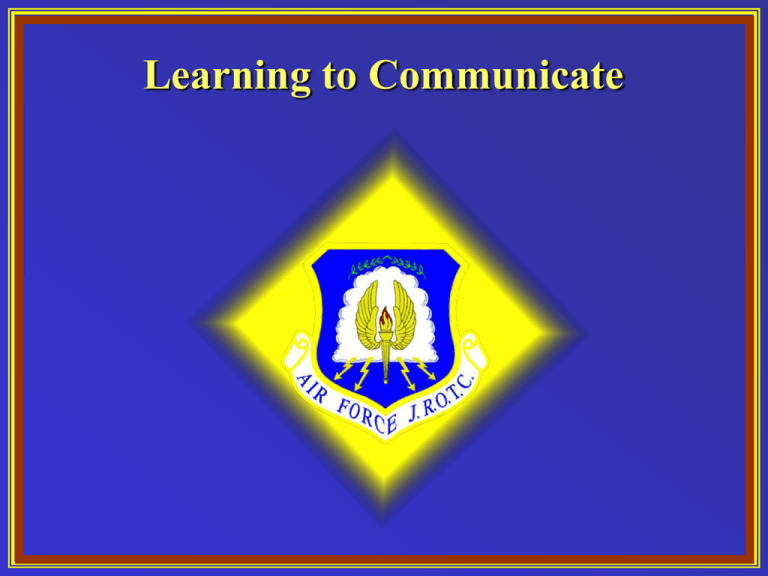
Learning to Communicate Chapter Overview 1. Learning to Communicate 2. Learning to Listen 3. Learning to Think Critically Chapter 1, Lesson 1 Lesson Overview • How does the communication process work? • What are encoding and decoding? • What are communication cues? • What are barriers to effective communication? • Why is feedback important? • What are some steps to improve communication? Chapter 1, Lesson 1 Quick Write Have you ever been in a situation where you thought that someone just wasn’t listening to you? What happened? How did you think and feel? What did you do? Write a few sentences to describe your reaction. Chapter 1, Lesson 1 Communication Process The Communication Process From Hersey, P., Blanchard, K. H., & Johnson, D. E. (2001). Management of Organizational Behavior: Leading Human Resources. Eighth Edition. Upper Saddle River, NJ: Prentice-Hall, Inc., p. 301. Chapter 1, Lesson 1 Encoding, Channeling, Decoding • Encoding turns a message into symbols that have meaning for the receiver • Channeling puts an encoded message into medium of delivery • Decoding translates the encoded message into meaning for you, the receiver Chapter 1, Lesson 1 Encoding and Decoding Graphic courtesy of Clipart.com Chapter 1, Lesson 1 Communication Cues • Signals that accompany sender’s verbal message • Nonverbal communication • Cues may include: – – – – gestures facial expressions eye behavior movement Chapter 1, Lesson 1 What communication cue is expressed here? Chapter 1, Lesson 1 Photo courtesy of Thinkstock Images Barriers to Communication NOISE • External Background noises, television turned on, other people, telephone ringing • Internal Daydreaming, fidgeting, hunger, sleepiness, anxiety Chapter 1, Lesson 1 Feedback • Feedback is the receiver’s response to the sender’s message • Feedback can be positive or negative • Feedback can indicate that your receiver got the message and whether it was understood • Feedback may indicate that the receiver needs more information or clarification Chapter 1, Lesson 1 Importance of Feedback Feedback closes the communication loop MESSAGE SENDER FEEDBACK Chapter 1, Lesson 1 RECEIVER Graphics courtesy of Clipart.com Improving Communication • Focus your message Plan what to say; know your goals and audience • Magnify the listener’s attention Make the message relevant to the receiver’s point of view • Penetrate barriers Use specific and concrete language • Listen actively Listen to understand meaning; hearing isn’t enough Chapter 1, Lesson 1 Review • Communication—creation and sending of information, from one person to another • The communication process involves senders, receivers, encoding, channeling, decoding, and feedback • Feedback helps the sender know if the receiver got the message correctly • Communication cues are nonverbal signals that add to the message Chapter 1, Lesson 1 Review • Noise is anything that interferes with communication • Noise can be internal, in which the receiver distracts him or herself • Noise can also be external, in which outside distractions and noises interfere • Therefore, feedback is critical to ensure that noise has not interfered with the message and that the receiver accurately interpreted the sender’s meaning • Feedback closes the communication loop, or process Chapter 1, Lesson 1 Review The Steps to Improve Communication • Focusing the message • Magnifying the listener’s attention • Penetrating barriers • Active listening Chapter 1, Lesson 1 Summary • How does the communication process work? • What are encoding and decoding? • What are communication cues? • What are barriers to effective communication? • Why is feedback important? • What are some steps to improve communication? Chapter 1, Lesson 1 Next • Done—the process of communication • Next—how to be an effective listener Chapter 1, Lesson 1 Graphic courtesy of ClipArt. com
